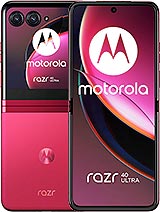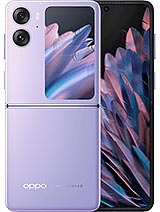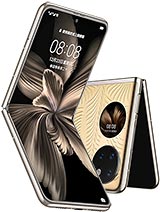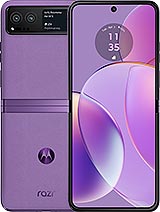Motorola Razr 40 review

Clean Android 13 with a few Moto tricks
Motorola has always been keen on the uncluttered Android experience and this has been one of the main appeals of its phones. However, in the context of a foldable smartphone, some may think it's more of a drawback. After all, foldable smartphones require a bit of extra touch to take advantage of the form factor. The good news is that Android isn't stale and has matured enough to accommodate the new foldable form factor and Motorola has worked closely with developers to polish the user experience. Moreover, the OEM promises three major OS updates for the Razr 40 and Razr 40 Ultra.

If you've ever used a Motorola smartphone or any other handset running a clean Android, you'd feel right at home. There's nothing out of the ordinary when it comes to aesthetics, navigation and Android-intrinsic features.

In a typical Motorola fashion, there are a handful of additional features for the main screen along with some exclusive ones thanks to the new external 1.5-inch display. Pretty much all of the additional features can be found in the Moto app, along with some useful tips on how to make the most out of the Razr 40.








Home screen, recent apps, notification shade, settings menu
Let's start with personalization. Motorola provides a ton of dynamic wallpapers that can be applied on the main and external screen. There's no Always-on display, though, not in the usual sense, at least. You can't set the external display to be always on, but Motorola offers the so-called Peek Display, which is the second-best thing. You can wake up the external screen by tapping on it or just bumping the phone. The software uses the accelerometer to wake up the screen. It shows notifications and a customizable clockface.






Moto features and personalization
There are a couple of other Moto gestures, like launching the flashlight with two hand-chopping motions or twisting the phone to launch the camera.
The sidebar is a fairly new addition to the Moto features. You can access your favorite apps via the Sidebar and launch them in small windows. Sadly, you can run only one app in the background and one in a small window, so the multitasking capabilities are somewhat limited.
Motorola also added a double-tap gesture on the back so you can launch an app or execute an action on the fly.


Quick launch with double tap on the back
Now off to the external display. The secondary screen is rather tiny, unlike the Razr 40 Ultra's, it cannot run full Android apps and offers limited functionality. This does not make it useless, though.



Panels • Panels • Camera gesture
It display the clock/date widget, there is one for the weather, too. Swiping from the bottom will reveal your notifications with an option for limited expanding. Swiping from the top brings down your quick toggles.
There are plenty of clock faces. Motorola also offers a few more panels such as Audio recorder, Contacts, Media controls, Timer, Calendar. You cannot accept calls from this screen, but there is a gesture to silence them (Pick up to silence).




External display customizations
Finally, you can also use the main cameras for selfies - there is a specific gesture to activate the camera app on the external screen while the phone is folded. You can then swipe from the sides to change the camera or the camera mode.

Some apps support semi-folded position and will split the screen in two, mostly for keyboard or camera purposes.

Introduced in 2021, Motorola's 'ready for' platform enables a multitude of use cases that put the phone in the center of a big-screen experience. Connecting a TV or a monitor allows you to get a Windows-desktop-like environment, play a game on your phone, display it on the external screen, or even have a video chat on a larger display.
And while this feature only worked with an appropriate USB-C to USB-C cable in the past, you can now make the connection using Miracast, which most modern TVs, monitors and PCs support. If you don't have a mouse and/or keyboard handy, the phone's screen can be used as a trackpad and/or keyboard.
You can also use 'ready for' on a Windows-based PC - it runs within a window on your desktop. This is helpful when you want to run an Android app from your computer or multi-task between devices on just one screen.



Ready For desktop-like experience
Another use case of 'ready for' on a Windows PC is for video calls, where you can use the phone's camera to capture yourself and an external display to see the other participants.
The final Ready For use case is for gaming on a bigger screen - be it TV or laptop/monitor. You connect an external controller and run the game on the phone, with the obvious benefit being the larger display for gameplay.
It works exactly like Samsung's DeX, bringing a desktop environment-friendly experience to Android and its apps.



Ready For desktop-like experience
All in all, Motorola's vision for Android is somewhat different than Google's as it provides a couple of unique features and was able to polish the foldable experience beyond the scope of vanilla Android. The best part is that the software didn't feel unfinished in any way, quite the opposite actually. Our experience was bug-free and the system ran smoothly without any slow-downs or hiccups.

Performance and benchmarks
The second significant difference between the Razr 40 and Razr 40 Ultra is the chipset. While the Ultra relies on the flagship-grade Snapdragon 8+ Gen 1, the Razr 40 utilizes the Snapdragon 7 Gen 1. It is a chipset that was almost a year ago but has only seen limited adoption.
It is based on the 4nm manufacturing process and includes Qualcomm's dedicated AI Engine. The CPU contains an octa-core CPU with 1x2.4 GHz Cortex-A710, 3x2.36 GHz Cortex-A710 and 4x1.8 GHz Cortex-A510 cores, while the GPU is the Adreno 644. The latter is supposed to be 20% faster than the one in Snapdragon 778G while AI-related tasks are said to be 30% faster.
In addition, the Adreno Frame Motion Engine claims to boost framerates two-fold while maintaining the same power consumption as the Snapdragon 778G. Although, that's hardly an issue for now given that most games are locked at 60 fps years after the mass adoption of HRR screens.
The base memory configuration is 8GB/128GB, but that's only available in select markets. There is also the 8GB/256GB version like our unit, which is the standard version in most countries, while some also get a 12GB/256GB variant.

The Snapdragon 7 Gen 1 has a capable processor performance and while not the best of the flip-able bunch, it is still quite competitive. The SD7 Gen 2 CPU inside the Poco F5 (here for comparison reasons) was obviously a much better choice though.
The GPU scores are underwhelming, unfortunately, with the Razr 40 lagging direct rivals. It's not that the GPU is not good, but there are obviously much more powerful in this price bracket. The SD7 Gen 2 would have been a much better choice for the Razr 40, but perhaps its arrival came too late in the phone's development cycle.
Next we ran the compound AnTuTu, where the Razr 40 once again scored the lowest score of the phones we've picked.
Finally, we ran some stress tests and here the news is good! The CPU scored a solid 71% sustained performance for over an hour of 100% load, while the GPU was excellent at 99.6%!
There is even better news - the Motorola Razr 40 doesn't get hot, just slightly warm even after over an hour of stress testing. It never overheated or noticeably throttled.
Well, the Razr 40 has an upper mid-range chipset and the benchmarks tell exactly that. It's still a powerful enough smartphone for most tasks, but gaming capabilities are a step behind the compeitition. In daily use we never had performance bottlenecks, but we are sure heavy users may find the Snapdragon 7 Gen 1 somewhat lacking.
Reader comments
- Anonymous
- 16 May 2024
- QMK
horrible bought 2 and they both only lasted a week stopped working for no reason and the other randomly got a white line going down the screen would not recommend and they want to send me another one for 30 idt i will
- user razr40
- 15 May 2024
- ssd
This phone is not good. Looks good. Basic job is calling where it fails miserably. voice is choppy and muted intermittently throughout the call. Service is another hassle. Almost non existent
- Anonymous
- 15 Nov 2023
- 0rf
Excellent phone for its price.




























